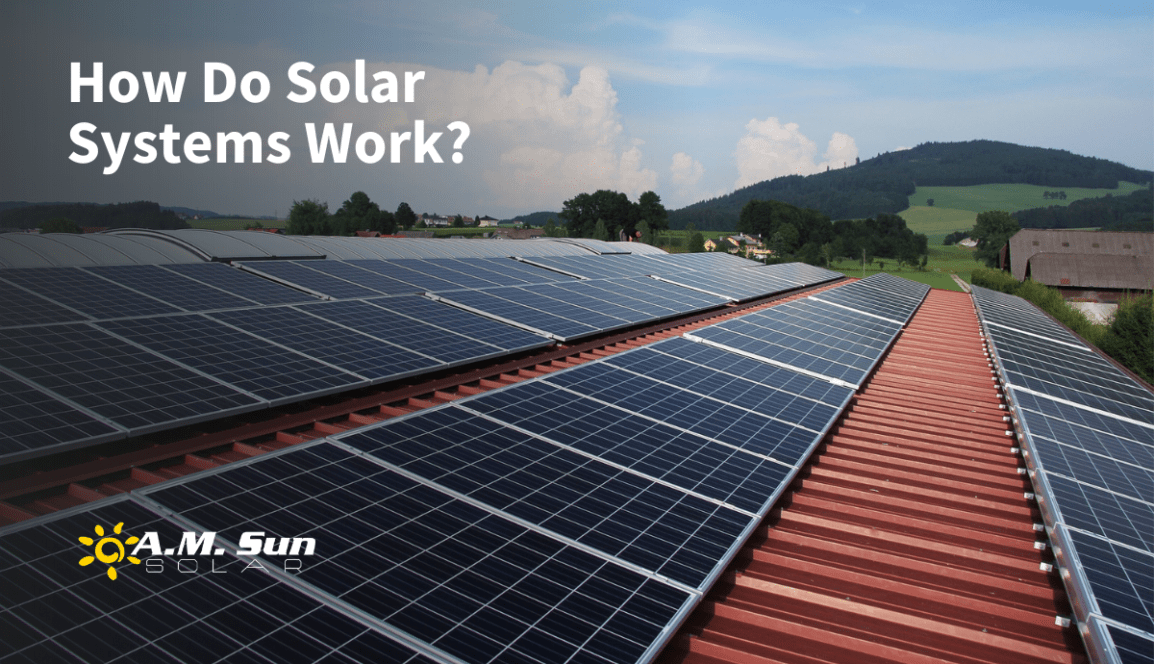Solar systems are popping up everywhere these days—at schools, wineries, and homes across the country. You can see the panels on roofs and ground mounts and in parking lots. If you have a solar system, you can also see how much they can reduce your utility bill. But have you ever wondered how they work? How do they convert sunlight into electricity to power our homes?
Residential solar systems produce power in four basic steps:
- Solar panels generate direct current DC energy.
Residential solar systems have approximately 15 to 30 solar panels mounted on a roof, the ground, or poles. Each of those panels has dozens of photovoltaic cells that capture sunlight to convert into DC (direct current) electricity. The amount of electricity generated by the solar system depends on the number and design of panels, as well as location and weather. The typical solar system produces between 250 and 400 watts. Not sure how much power your home needs? Here are some things to consider.
- The solar inverter converts power into AC electricity.
Home appliances need alternating current (AC) electricity in order to work, so the DC electricity needs to be converted by solar inverters. There are two main types of inverters offered on the market today: string inverters and microinverters. String inverters, also called “central inverters,” have multiple solar panels connected in a “series string” to a single inverter. Microinverters are much smaller and installed on the back of each individual solar panel. For more information about inverters and choosing the right one for your home, read our blog Microinverters and String Inverters: What’s the Difference?
- The solar inverter supplies power to the home.
The inverter then feeds AC power to your home’s circuit board at the appropriate voltage for appliances to use. The amount of watts each appliance needs can range from single digits (a clock) to thousands per hour (air conditioner).
- Excess solar power is exported to the grid or stored in backup batteries.
Most homes have grid-tied solar systems and many also have backup batteries to store power. Solar panels often generate more electricity than homeowners are capable of consuming. With net metering, you can channel this excess electricity back to the utility grid. In return, you can draw electricity from the grid during peak usage hours and when the sun isn’t out.
The addition of a battery allows you to store and use excess energy before it is sent back to the grid. A typical solar battery can deliver approximately 10 kWh of capacity. With three backup batteries, an average home in the U.S. can have enough energy to power their home for 24 hours..
More about A.M. Sun Solar
A.M. Sun Solar is the local leader in custom solar solutions and installations on the Central Coast. For over 15 years, A.M. Sun Solar has provided high quality, cost efficient solar energy to residences and small businesses in San Luis Obispo, Monterey, and Santa Barbara counties. With a wide variety of financing solutions available, affordable pricing, custom solutions and complete installations from permit to interconnection, A.M. Sun Solar is the go to local solar company on the Central Coast.
Ready to make the switch to solar energy? Fill out the form below to get a FREE on-site consultation with one of our friendly solar experts.

